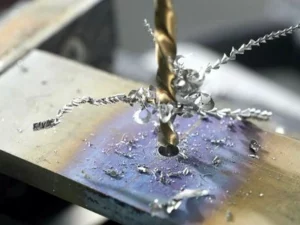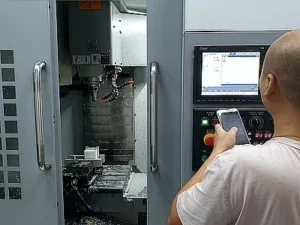Drilling and milling are fundamental processes in machining, each serving distinct purposes in shaping materials. While both involve removing material from a workpiece, they differ significantly in their methods, tools, applications, and outcomes. In this text we are comparing drilling and milling: key differences and applications.
 Drilling Explained
Drilling Explained
Drilling involves creating cylindrical holes in a workpiece using a rotating cutting tool called a drill bit. The primary purpose of drilling is to generate holes with precise dimensions and depths. This process is commonly employed in manufacturing to create holes for fasteners, such as screws, bolts, and rivets, or to accommodate shafts, pins, and dowels.
 Milling Process
Milling Process
Milling, on the other hand, is a versatile machining operation that involves cutting away material from a workpiece using a rotating multi-point cutting tool called a milling cutter. Unlike drilling, milling can produce a wide range of shapes, including flat surfaces, slots, gears, threads, and complex contours. It is a highly adaptable process used in various industries for manufacturing components with intricate geometries.
Differences between Drilling and Milling
One key distinction between drilling and milling lies in the type of motion involved. Drilling typically employs a linear motion of the drill bit along the workpiece’s axis, resulting in a straight hole. In contrast, milling involves simultaneous rotational and linear movements of the milling cutter relative to the workpiece, enabling it to cut material along different axes and directions.
Another difference is the nature of the tools used. In drilling, the primary tool is the drill bit, which has a pointed end for initiating the hole and flutes along its length for chip evacuation. Drill bits come in various designs optimized for specific materials and hole diameters. Conversely, milling utilizes a variety of milling cutters, each designed for specific applications, such as end mills, face mills, and ball mills. These cutters feature multiple cutting edges that enable efficient material removal.
Different Cutting Mechanisms
Additionally, the cutting mechanisms in drilling and milling differ significantly. In drilling, the cutting action primarily involves axial forces as the drill bit penetrates the workpiece, shearing off material along its path. This process is relatively straightforward, focusing on removing material to create a hole with precise dimensions. In contrast, milling involves a more complex cutting action, with the milling cutter simultaneously engaging multiple points on the workpiece. This results in various types of forces, including radial, axial, and tangential forces, contributing to the generation of different surface geometries.
Moreover, the applications of drilling and milling vary based on their capabilities and limitations. Drilling is predominantly used for producing simple holes in materials such as metal, wood, plastic, and composites. It is commonly employed in industries like aerospace, automotive, construction, and electronics for assembly and fastening purposes. Conversely, milling finds extensive application in manufacturing intricate components with precise dimensions and complex shapes. Industries such as aerospace, automotive, medical devices, and mold making rely heavily on milling for producing prototypes, tooling, dies, and custom parts.
Milling and Drilling have a Different Purpose
Furthermore, the level of precision achievable differs between drilling and milling operations. Drilling is generally suited for producing holes with high accuracy in terms of diameter and depth. Modern drilling machines equipped with advanced features like CNC (Computer Numerical Control) can achieve tight tolerances and repeatability. However, milling offers greater flexibility and precision in shaping workpieces, allowing for tighter tolerances, smoother surface finishes, and intricate details.
Another factor to consider is the material removal rate (MRR), which varies between drilling and milling. Drilling typically results in a lower MRR compared to milling due to its single-point cutting action and limited engagement with the workpiece. In contrast, milling can achieve higher MRRs by employing multiple cutting edges simultaneously, enabling faster material removal and shorter machining times.
Different Machines for Drilling and Milling
Additionally, the setup and operation of drilling and milling machines differ in complexity. Drilling machines are relatively simpler in design and operation, typically requiring minimal setup and fewer machining parameters to adjust. They are well-suited for high-volume production of simple holes. In contrast, milling machines come in various configurations, ranging from manual mills to sophisticated CNC machining centers. Setup and operation involve considerations such as tool selection, workpiece clamping, toolpath programming, and cutting parameters optimization, making milling more complex but offering greater versatility and control.
In conclusion, while comparing drilling and milling, their key differences and a pplications, both drilling and milling are essential machining processes used in manufacturing, they differ significantly in their methods, tools, applications, and outcomes. Drilling is primarily focused on creating precise holes in workpieces, whereas milling offers greater versatility in shaping materials and producing complex geometries. Understanding the distinctions between drilling and milling is crucial for selecting the most appropriate machining method based on the specific requirements of a given application.
 Drilling Explained
Drilling Explained Milling Process
Milling Process